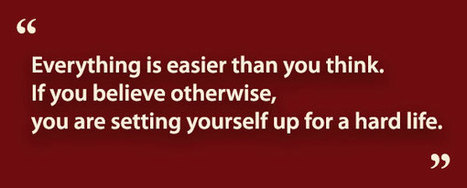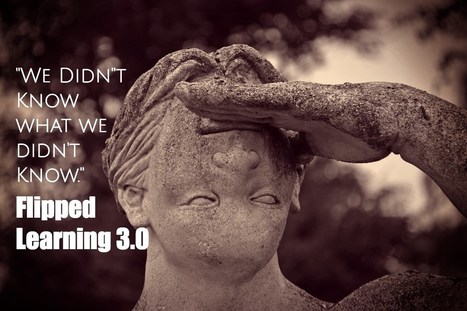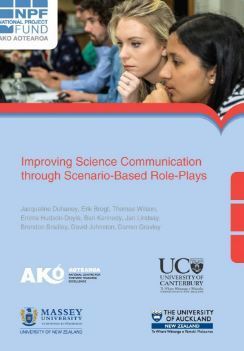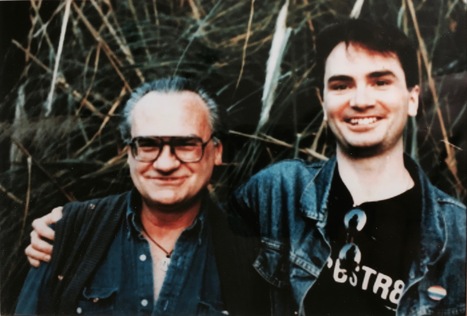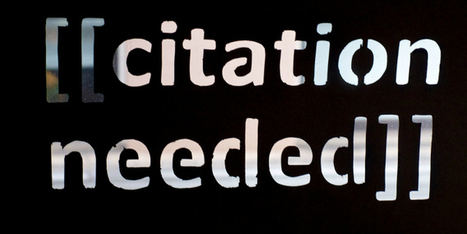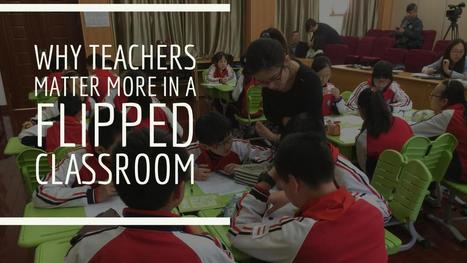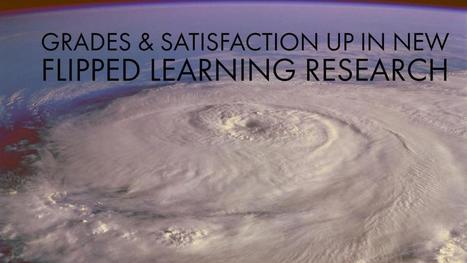When I heard a teacher tell me that they were creating recorded lectures for courses as homework assignments and spending classroom time on discussions and more active learning, I knew right then the value of the lecture capture tools.
Lecture capture technologies are not new to education. The enterprise solutions that exist are amazing and powerful. Tegrity, Echo 360, Sonic Foundry, Camtasia Relay, Wimba, and Elluminate have all had a hand in the market for some time and they all provide an opportunity for teachers to record content that students can access in a variety of formats and locations. Additionally, there are a number of free tools on the market that allow instructors to narrate anything on their computer screen are valuable tools in any classroom environment.
Get Started for FREE
Sign up with Facebook Sign up with X
I don't have a Facebook or a X account

| Tags |
|---|
 Your new post is loading... Your new post is loading...
 Your new post is loading... Your new post is loading...
“Everything is easier than you think. If you believe otherwise, you are setting yourself up for a hard life.”
Critical instructional design moves toward realizing the possibility for learning that blends a new form of rigor with agency through a practice of inquiry, empathy, and emergence. The invention of the learning management system was a mistake. And here I’m not going to make the same frustrated argument made numerous times before now that LMSs are limiting structures, that their interface and functionalities control how teachers teach online (although those things are true). The LMS was a mistake because it was premature. In a world that was just waking up to the Internet and the possibility of widely-networked culture, the LMS played to the lowest common denominator, creating a “classroom” that allowed learning—or something like learning—to happen behind tabs, in threaded discussions, and through automated quizzes.
Kim Flintoff's insight:
Critical instructional design moves toward realizing the possibility for learning that blends a new form of rigor with agency through a practice of inquiry, empathy, and emergence. The invention of the learning management system was a mistake. And here I’m not going to make the same frustrated argument made numerous times before now that LMSs are limiting structures, that their interface and functionalities control how teachers teach online (although those things are true). The LMS was a mistake because it was premature. In a world that was just waking up to the Internet and the possibility of widely-networked culture, the LMS played to the lowest common denominator, creating a “classroom” that allowed learning—or something like learning—to happen behind tabs, in threaded discussions, and through automated quizzes. And worse, the LMS convinced us that teaching online was not only possible, it was easy—that digital pedagogy was a mere work of relocation. Take your lectures and your assignments, create a slideshow or a video or a piece of audio, load it all up, and there you have it: online learning.Share your insight
Harvard Business School professor Amy Edmondson is known for her research on teaming, the idea that in today’s fast-paced world, organizations cannot rely on stable teams; instead, they must embrace a culture of teaming—people coming together impromptu to work on a shifting mix of projects with a shifting mix of partners. She wrote:
Kim Flintoff's insight:
Harvard Business School professor Amy Edmondson is known for her research on teaming, the idea that in today’s fast-paced world, organizations cannot rely on stable teams; instead, they must embrace a culture of teaming—people coming together impromptu to work on a shifting mix of projects with a shifting mix of partners. She wrote:
Teaming is about identifying essential collaborators and quickly getting up to speed on what they know so you can work together to get things done. This more flexible teamwork (in contrast to stable teams) is on the rise in many industries because the work—be it patient care, product development, customized software, or strategic decision-making—increasingly presents complicated interdependencies that have to be managed on the fly. The time between an issue arising and when it must be resolved is shrinking fast. Stepping back to select, build, and prepare the ideal team to handle fast-moving issues is not always practical. So teaming is here to stay.
A curated conversation of the book Self-Determined Learning edited by Stewart Hase & Chris Kenyon featuring 50 words on every chapter trying to answer the question "What is Heutagogy?" for World Heutagogy Day 26 September 2013
5 Takeaways For Your Classroom
Kim Flintoff's insight:
5 Takeaways For Your Classroom
1. Create daily opportunities for students to connect in the presence of a pressing need (or need to know) 2. Resist the temptation to tightly package “instruction,” but rather provide diverse opportunities for students to demonstrate understanding both before and after open-ended collaboration 3. Support students in metacognitive thinking, helping them identify their own “hunches”; model how hunches converge in “the real world” 4. Use concept-mapping, journaling, and other simple tools to help illuminate what thinking and creativity “are,” where they come from 5. Consider swapping out direct instruction–>collaboration–>assessment patterns for more frequent acts of self-directed learning
One of the questions I get about learning pathways (on the rare occasion someone actually reads this blog and ask a question) is “when we give learners the option to chose between instructor-centered options and learner-centered options, how do they record what they are doing?” Sure, learners could blog about what they do, but that often ends up being a narrative about the pathway they create rather than an actual visual representation of the pathway itself. A blog post is great in many ways, but I think people are often wonder if there is something different.
In the vastness of the information landscape at everyone’s fingertips, without this guide, the student can easily become bogged down, miss the big picture and indeed massive sections of the potential curriculum.
#1 Flipped Learning Is Not Static #2 Flipped Learning is Evolving Because of Three Factors #3 Flipped Learning Has Emerged As a Global Movement #4 There Is a New Awareness Emerging About Flipped Learning #5 There Is a Rapidly Expanding Set of New Possibilities
Flexible classroom seating invites collaboration, communication, creativity, and critical thinking by helping students manage their physical energy and comfort as they learn on their own terms.
Active, Student-Centered Learning
Breaking Through the Glass Ceiling With Personalized Learning
Do you remember watching Ms. Frizzle on Magic School Bus? If so you can recall her iconic words to every wide-eyed child under her spell: Take chances, make mistakes, get messy! But what exactly did she mean by that? And why would she encourage such a thing as messy learning?
|
Translating scientific results, conclusions, and recommendations into language easily understood by non-experts is a critical skill for scientists and science learners.
Indiana University's Mosaic Active Learning Initiative, a program launched in fall 2015 that supports faculty teaching, research and classroom design for active learning environments, has expanded to five of the institution's regional campus: IU East, IU Kokomo, IU Northwest, IU South Bend and IU Southeast.
The second move for creating a dynamic classroom is to release control to students so that they can make progress without waiting for the class or teacher and practice the mindset of agency. To do this, a teacher must free students from teacher-delivered instruction and give them content and lessons that they can learn independently.
Kim Flintoff's insight:
The second move for creating a dynamic classroom is to release control to students so that they can make progress without waiting for the class or teacher and practice the mindset of agency. To do this, a teacher must free students from teacher-delivered instruction and give them content and lessons that they can learn independently.
The traditional classroom model does not lend itself well to students learning independently. Its instructional format is predominantly face-to-face, teacher-delivered lectures or demonstrations of the material, and each cohort of students works through a single, unified curriculum at the pace of the whole group. Other learning models are arising, however, that open broad possibilities for teachers to empower students to drive their own learning while teachers shift to helping students in other ways. The main technical innovation behind these new models is online learning, which simplifies the task of putting content and lessons directly in the hands of students for them to control themselves.
Authentic learning is a useful approach for encouraging our learners to develop the critical thinking skills and confidence needed to tackle real-life situations. However, it can be hard to get out of the more traditional mindset where the teacher is the source of knowledge and assessment of information learned is done through the use of clear right or wrong answers to standard questions. The definition for authentic learning is rather encompassing and may make it difficult for a teacher to get a handle on how to approach its implementation and direct learners in questioning. However, if you have seen kids in an engaged classroom, you may have stumbled upon one of the pillars that are fundamental in an authentic learning experience.
To teach, we must believe in the potential of each person in the room. Unwaveringly. This is not to say we don’t get to have our bad days, our off days, the days when we really can’t stand to talk to another student or plan another lesson. But it does mean that we teach for a reason, and that reason lies in what lies in the heart of a student. What lay in our hearts when we were students. Hope despair melancholy desire passion hunger confusion. All the things it takes to learn to walk. All the things it takes to learn to do anything. All the things it takes to live in Los Angeles, or to love someone who is hard to love.
The significance of citations goes far beyond energising and rewarding academic competition. Patrick Dunleavy outlines why citations are so important; from setting up a specialist discourse in an economical and highly-focused manner, guiding readers seeking to follow your extended chain of reasoning, right through to showing you have comprehensively surveyed all relevant work and pointed out its consistencies (or otherwise) with your own findings. A better appreciation of the multiple functions of citations should help to address the chronic under-citation that particularly besets the humanities and social sciences.
I am an active learning college instructor and I'm tired. I don't mean end-of-the-semester and need-some-sleep tired. I mean really, weary, bone-deep tired.
In one of the classes I teach at CCA, students were confused by mental models, conceptual models, concept maps, etc. I ended up drawing a taxonomy for models on the whiteboard, and it may help others. This post is for them first, then you!
The challenge is to have assessments that provide reliable, actionable information about student learning in the various phases of flipped learning.
The reason Flipped Learning makes teachers more valuable is that it changes the dynamic of the classroom. No longer is content delivery the focus of the class, nor is the teacher’s main responsibility the dissemination of knowledge. Instead, teachers take on the role of a facilitator of learning. They can work with students in small groups and have more one-on-one interactions. The simple act of removing the direct instruction (lecture) from the whole group changes the dynamic of the room and allows the teacher more time to personalize and individualize the learning for each student. Each student gets his/her own education tailored to their individual needs. Instead of a one size fits all education, each student gets just what they need when they need it.
Over the last three years, flipped learning strategies have been implemented in year 9 science. There has been a gradual increase in the use of flipped learning over this time. Students watch short teacher-made educational videos via the school’s learning management system in their individual learning space. The group learning space involves learning experiences to practice and deepen knowledge through activities, peer-teaching, and experiments. I have evaluated the effectiveness of flipped learning by comparing the academic performance of the year 9 cohorts and by administering a student perception survey on flipped learning. In this post, I have provided very little commentary because I feel that the results speak for themselves.
Curtin fashion and design students have been given an exciting and challenging brief to work their creativity on a ground breaking new material. |





